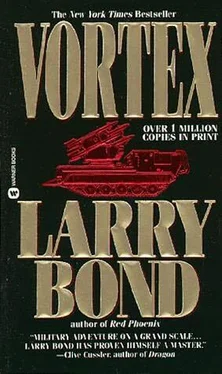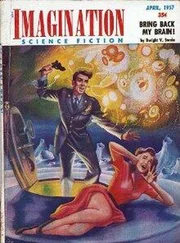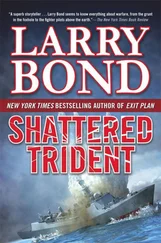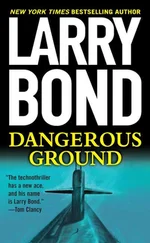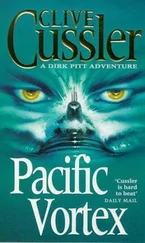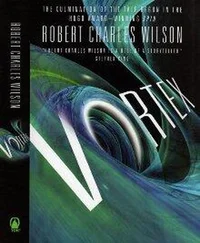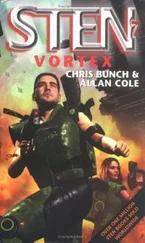“Quite a lot, Mr.
Vice President. South Africa could still export by air and ground of course, but those are awfully narrow ‘pipelines’ for their major products.”
He nodded toward the map.
“And some commodities, especially oil, have to come by sea. In fact, oil imports are their biggest Achilles’ heel. It’s about the only mineral resource South Africa doesn’t have in ridiculous abundance.”
Hurley frowned.
“I’m not sure that’s quite right, Mr. Secretary. Last time
I checked, Pretoria was supposed to have a five-year strategic petroleum reserve stashed away.”
“A five-year reserve in a peacetime economy,” General
Hickman pointed out.
“But there’s a war on down there, and wars burn gas at a helluva rate.”
Forrester nodded slowly.
“True enough. And imposing a blockade on South
Africa’s imports would send a pretty goddamned strong shot across
Vorster’s bow-one he couldn’t shrug off or just ignore. ” He felt a small, tight smile spread across his face. Even thinking about doing something real, something concrete, about the mess in South Africa made him feet better.
He looked at Hickman.
“How soon could that carrier group reach South
African waters?”
“We could have a carrier, her escorts, and eighty-six aircraft in range in eight days, Mr. Vice President.”
“I still don’t think sending a warship is the best course of action.”
Nicholson sounded worried, almost alarmed at the idea.
“Using any kind of military force would be inflammatory. “
“And just whose opinion would we be inflaming, Mr. Director?” Hurley didn’t bother hiding his sarcasm.
“The South Africans? Hell, I should hope so. That’d be the whole point of the exercise. The Europeans? I sincerely doubt it. If anything, most Europeans are even more outraged by Vorster’s actions than people are here in the States.”
Forrester mentally scored a point for Hurley. His reading of European political and public opinion seemed right on target. As an example,
Britain’s prime minister had long been one of the staunchest opponents of indiscriminate sanctions aimed at South Africa. But the revelation that Vorster had played a hand in the deaths of Frederick Haymans and his cabinet had swung him around almost one hundred and eighty degrees. In the last two days alone, he’d been on the phone twice with the President urging joint U.S. and British action against what he now called
“Vorster’s dastardly cabal.”
Hurley faced him squarely.
“In a nutshell, I think General Hickman’s suggestion has merit, Mr. Vice President. We’ve been damned for not doing anything. Let’s be damned for doing something constructive.”
One by one, the others around the table nodded, some with
more enthusiasm than others, but all agreeing nonetheless. Only Nicholson shook his head angrily, evidently outraged at having been overruled.
Forrester suspected that the CIA director’s anger had more to do with his perceived loss of face than with any serious disagreement over policy.
He glanced at the wall clock.
“All right, ladies and gentlemen. I’m meeting with the President in half an hour, and I’ll pass along the recommendation that we dispatch a carrier battle group, with the eventual mission of establishing a maritime blockade of all South African ports.”
He smiled crookedly.
“In the circumstances, I suspect he’ll approve it wholeheartedly. “
More nods. Everyone present knew only all too well how much heat the
President was taking from the Congress and the media for his apparent inaction. With no economic or diplomatic options, the administration’s carefully worded statements had only served as a point of departure for its critics. Action, easy to call for but hard to specify, was the only thing that made good PR.
Forrester glanced down at his agenda. One penciled-in item remained. He looked up.
“Also, effective immediately, the President’s asked me to establish a Crisis Group to monitor the southern African situation and to provide day-to-day control over our initiatives in the region.”
Still more nods. Establishing a Crisis Group-a full-time team of junior
NSC members and staffers-was the logical next step. Everyone in the room could see that events in South Africa were moving too fast for the ordinary processes of government to be effective. The cabinet officers who made up the regular National Security Council had too many other responsibilities to devote full attention to a single prolonged crisis-no matter how important or how dangerous.
Forrester stared down the table, focusing his gaze on Nicholson’s red face. The CIA director had already proven surprisingly unwilling to back proposals made by other members of the President’s inner policy-making circle. It was time to make sure he knew who held the reins on this issue.
“I’ve recommended that Ed Hurley take charge of the group, and the
President agrees. I expect deputies from all concerned departments and agencies to be assigned by this afternoon. Understood?”
Forrester noticed several ill-concealed looks of surprise on several faces around the table. With the crisis escalating, most of the NSC’s members had undoubtedly expected him to name a military man or one of the intelligence agency deputies. Well, they’d reckoned wrongly. Hurley had the brains and background needed for the job. He’d also shown that he had the guts and political savvy needed to take on those above him inside the administration. Forrester had him marked as a serious contender for higher office in the near future.
Even better, Hurley was still low enough down on the totem pole to feel awkward about exercising his newfound authority without frequent consultation. Neither the President nor Forrester planned to relinquish any substantive part of their power over U.S. policy toward Pretoria.
The growing catastrophe in southern Africa was now much too important to be left solely in the hands of the bureaucrats and political appointees.
NOVEMBER 6-ABOARD THE USS CARL WNSON, SOUTH OF THE MALDIVE ISLANDS
The American battle group spread over a hundred square miles of the Indian
Ocean, steaming west just long enough to allow its massive, Nimitz-class carrier to launch and recover her aircraft. Eight other ships ringed the carrier-two guided-missile cruisers, a pair of guided-missile destroyers, two more destroyers for antisubmarine warfare, and two bulky combat support ships carrying needed fuel, ammunition, and stores. Well ahead of the battle group, two Los Angelesclass attack submarines slid quietly through the water, their ultra sophisticated computers constantly sifting the sounds of fish and ocean currents-searching for telltale engine or propeller noises that might signal the approach of a hostile surface ship or sub,
Above the battle group, aircraft of various types orbited slowly in
fuel-conserving racetrack patterns. Huge, twin-tailed F-14 Tomcats loitered on combat air patrol. A twin engined
E-2C
Hawkeye provided early warning of any incoming plane or missile, and a boxy
S-3 Viking swooped low now and again to monitor the line of passive sonobuoys it had dropped ahead of the oncoming carrier group.
Aboard the carrier itself, video monitors brought the sights and sounds of the busy flight deck to the Carl Vinson’s soundproofed flag plot. Radios muttered near control consoles, relaying conversations between the Vinson’s air wing commander, the CAG, his assistants, and pilots already in the air, landing, or awaiting takeoff. Glowing computer displays updated the position and status of every unit in the formation.
Rear Adm. Andrew Douglas Stewart ignored the constant hum of activity all around as he scanned the message flimsy that had just arrived. As he read, he rocked back and forth slowly on the balls of his feet-still as compact and trim as he’d been when he earned his living as an attack pilot over
Читать дальше
